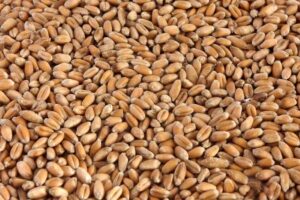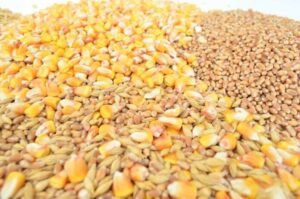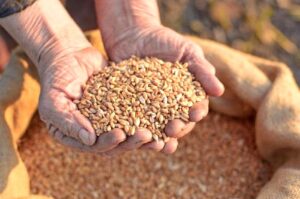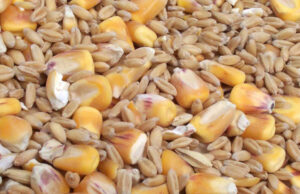
The TAS Agro agricultural holding has begun harvesting early grains from winter wheat in the Southern cluster and has already threshed about 600 hectares, the agricultural holding’s press service reported on Facebook.
TAS Agro specified that the harvest started at the optimal time and that grain yields are fully in line with standards.
“This year, we will make maximum use of our own equipment, which has been updated in recent years. However, we will not refuse to lease combines for economic reasons. In total, we plan to use 75 units of grain harvesting equipment during the harvest. This is more than last year, as the area under early grain crops has increased, particularly in the Southern cluster. Almost all of our own grain transshipment equipment will also be used,” said Oleg Zapletnyuk, CEO of TAS Agro.
According to him, in parallel with the harvesting campaign, the agricultural holding is working on organizing logistics and sales of the harvested crop. Storage facilities and some elevators have already been certified to the international standard ISO 22000:2018.
For the 2025 harvest, TAS Agro has sown 22,000 hectares of winter wheat, 14,000 hectares of winter rapeseed, 16,000 hectares of sunflower, 15,000 hectares of soybeans, and 7,000 hectares of corn.
Soon, in the Southern cluster, parallel to the wheat harvest, the rapeseed harvest will begin. Over the next few weeks, the harvest will spread to other clusters, the agricultural holding concluded.
TAS Agro was established in 2014. Its land bank includes 88,000 hectares in the Chernihiv, Sumy, Kyiv, Vinnytsia, Kirovohrad, and Mykolaiv regions. It specializes in crop production, and the agricultural holding’s elevator capacity is about 250,000 tons. The livestock business is represented by a herd of 5,500 head of cattle, of which 2,500 are dairy cattle.
The agricultural holding is part of the TAS group, founded in 1998.
Its business interests include the financial sector (banking and insurance segments) and pharmacies, as well as industry, real estate, and venture projects.
The founder of TAS and beneficiary of the TAS Agro agricultural holding is Serhiy Tihipko.

Ukraine’s winter wheat harvesting campaign has started, with initial yields still at a low level, according to the analytical cooperative Pusk, created within the Ukrainian Agrarian Council (UAC).
“The first results are not impressive yet – the average yield is about 2.1-2.15 tons/ha. But this is only the beginning of the campaign, and under favorable weather conditions we expect the average to increase,” the analysts said.
They emphasized that the weather conditions remain favorable for the harvesting, as no precipitation is expected this week and next week, so the field works will continue without any delays.
“However, on the grain market, traders are currently focused on barley and rapeseed. According to forecasts, ships with wheat are expected to start entering ports on July 15-18, so the market is still relatively calm,” the experts said.
According to their information, wheat prices are currently fluctuating around $210/ton for the third class on a CPT-port basis. Analysts expect a gradual increase to $230-240/ton in the fall, and the price peak may occur in December-February, when the price may reach $250-260/ton.
The global market is also showing signs of supply reduction.
“The US and Russia, as key exporters, have serious problems with the harvest. This creates the potential for further growth in world prices. If the losses are confirmed, we may see $230-240 per ton in August-September,” Pusk predicts.

As of July 1, 2024-2025 marketing year (July-June), Ukraine exported 40.499 mln tonnes of grains and pulses, of which 2.217 mln tonnes were shipped in June, the press service of the Ministry of Agrarian Policy and Food reported, citing data from the State Customs Service.
According to the report, as of June 28 last year, the total shipments were estimated at 50.553 million tons, including 3.621 million tons in June.
According to the preliminary estimates, in 2024/25 season, Ukraine exported 15.704 mln tonnes of wheat (18.3 mln tonnes in 2023/24 MY), 2.318 mln tonnes of barley (2.477 mln tonnes), 10.8 thsd tonnes of rye (1.6 thsd tonnes), and 21.788 mln tonnes of corn (29.233 mln tonnes).
The total exports of Ukrainian flour in 2024/25 MY are estimated at 70.4 thsd tonnes (in 2023/24 MY – 97.8 thsd tonnes), including 65.8 thsd tonnes of wheat (92.4 thsd tonnes).
Thus, in the season-2024/25, the grain exports were down by 19.9% in general, by 14.2% for wheat, by 6.4% for barley, by 25.5% for corn, by 28.1% for flour, including 28.8% for wheat. At the same time, in 2024/25 MY Ukraine increased rye exports by 6.8 times.
As reported, in the season-24/25, the domestic market faced the deficit of rye. Flour mills and bakeries started importing it in winter 2025. The main countries supplying rye and rye flour to Ukraine are the Baltic states and Poland. Industry associations predict that in 2025/26 MY Ukraine will face a 100% deficit of rye due to the further reduction of the production area under this crop. According to experts, this will lead to a 20% rise in bread prices.

As of June 25, Ukraine exported 40.314 mln tonnes of grains and pulses since the beginning of 2024-2025 marketing year (July-June), of which 1.942 mln tonnes were shipped since the beginning of the month, the press service of the Ministry of Agrarian Policy and Food reported, citing the State Customs Service.
According to the report, as of June 28 last year, the total shipments were estimated at 50.553 million tons, including 3.621 million tons in June.
At the same time, since the beginning of the current season, Ukraine has exported 15.641 mln tonnes of wheat (18.3 mln tonnes in 2023/24 MY), 2.318 mln tonnes of barley (2.477 mln tonnes), 10.8 thsd tonnes of rye (1.6 thsd tonnes), and 21.759 mln tonnes of corn (29.233 mln tonnes).
The total export of Ukrainian flour since the beginning of the season as of June 25 is estimated at 69.7 thsd tonnes (in 2023/24 MY – 97.8 thsd tonnes), including 65.2 thsd tonnes of wheat (92.4 thsd tonnes).

In mid-June, the Ukrainian wheat market was dominated by downward price dynamics, according to the information and analytical agency APK-Inform.
“The approaching harvest, low demand from traders awaiting the new harvest, and a downward price trend on the export market put pressure on prices. The supply of grain remained insufficient, while demand from processors was quite high, which continued to support prices,” analysts explained.
Prices for grade 2 wheat were recorded at 10,000-11,300 UAH/t CPT, and for feed wheat at 9,200-10,200 UAH/t CPT, according to APK-Inform.

The US Department of Agriculture (USDA) has improved its forecast for global wheat and corn production in the 2025-2026 marketing year, with no change to its harvest forecast for Ukraine.
According to the forecast on the US agency’s website, the wheat harvest in Ukraine is estimated at 23 million tons, exports at 16.5 million tons, and ending stocks at 1.49 million tons. The corn harvest is expected to reach 30.5 million tons, with exports at 24 million tons and final stocks at 0.6 million tons.
At the same time, global wheat production in 2025/2026 MY will amount to 808.5 million tons (+0.07 million tons compared to last season), exports – 214.33 million tons (+1.34 million tons), and final stocks – 262.76 million tons (-2.97 million tons).
USDA analysts forecast global corn production in 2025/2026 MY at 1,265.98 million tons (+1 million tons compared to the previous season), global exports at 195.81 million tons (+0.01 million tons), and ending stocks at 275.24 million tons (-2.6 million tons).